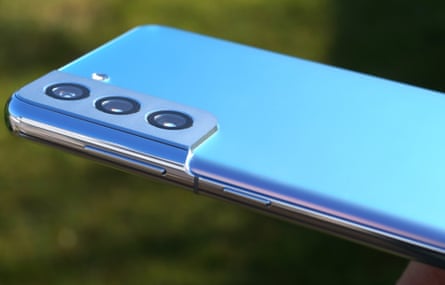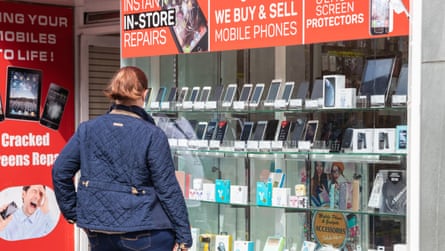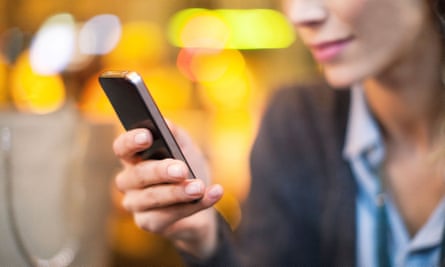If you need a new smartphone but want to save money and be more sustainable, buying a refurbished one is the answer.
As with brand-new phones, there are many places to buy them from, but there are also various types of refurbished handsets, and a few potential pitfalls to avoid. Here’s what you need to know.
Check for updates
“If you need a new phone and want to save some money, you should definitely consider buying a preowned handset,” says Tom Paton, the founder of Green Smartphones, a comparison website.
He adds that refurbished phones are typically devices that have been used for a year or two and then traded in by someone who is upgrading to the latest device. “These handsets are tested to make sure they are still responsive and have good battery life, before having any wear and tear fixed. Then the device is sold with a warranty, just like a new phone.”
When looking for a refurbished or secondhand phone, it is crucial to check that the particular model is still getting software updates from the manufacturer, as it is not safe to use a phone that isn’t receiving security fixes.
Many Android phones only get three to four years of updates from the moment they are released – not when you buy the handset – but the best offer five to 10 years of support, including some Samsung, Google and Fairphone devices. Apple typically offers up to seven years for its iPhone models.
 View image in fullscreenThe Samsung Galaxy S21. Photograph: Samuel Gibbs/The Guardian
View image in fullscreenThe Samsung Galaxy S21. Photograph: Samuel Gibbs/The Guardian
That makes Apple’s iPhones from the last three years – alongside recent Samsung Galaxy S21, S22 and S23 models and Google Pixel 6 or 7 phones from the last two years – among the best bets when it comes to refurbished models.
How much should I pay?
Refurbished phones come in two different types and various grades. The best is “manufacturer-refurbished”, which essentially matches a new phone. However, these typically cost most and are sometimes in short supply.
An iPhone 12 Pro, for example, costs about £150 more refurbished from Apple than from a third party at the time of writing.
Retailer or third-party refurbished devices are secondhand phones that have been tested to check they work and repaired if necessary. They vary in condition and are often sold in grades. Here is what you can roughly expect.
Grade A Virtually identical in condition to a new phone without marks on the outside, often with the original box and accessories. These are frequently customer returns rather than trade-ins.
Grade B In full working order but not in perfect condition, usually with light scratches, dents or nicks. They may come with original accessories.
Grade C Visibly worn but in full working order, typically sold without the original accessories.
Grade D Also known as “for spares and repairs” or similar. These are broken devices sold for people to fix or gut for parts.
Where should I buy?
The secondhand phone market is growing at a rapid pace, with many new and established retailers about.
Manufacturer-refurbished phones can be bought straight from the maker, including Samsung and Apple in the UK.
There are several high street retailers such as CeX and Game that sell secondhand and refurbished phones that come with various warranties.
 View image in fullscreenThe secondhand phone market is growing. Photograph: Gary Hider/Alamy
View image in fullscreenThe secondhand phone market is growing. Photograph: Gary Hider/Alamy
Envirofone and musicMagpie are two longstanding online sellers of refurbished devices, and have various grades and deals available, each with a 12-month warranty.
Back Market is one of the newer offerings acting as a marketplace for small refurbishers, allowing you to pick and choose phones and who they come from. Back Market says it vets sellers and monitors for quality, but it is still worth checking reviews for the individual refurbishers on the site before buying.
Finally, eBay plays host to many sellers of secondhand and refurbished devices but as an open marketplace, it is crucial you research the seller before buying. Check their reviews and feedback, and scrutinise the listings carefully.
What should I check for?
There are a few things to check when your phone arrives.
Battery health Batteries wear out, typically only maintaining up to 80% of their original capacity after 500 full-charge cycles, or about two years of charging every night. Has it been replaced?
Charging port Check for signs of damage, as the charging port could be one of the first parts to break.
Buttons Check that all the buttons work without pressing too hard, as a faulty button could render the phone very difficult to use and may be expensive to fix.
Network locks Check the phone works with your mobile phone provider of your choice, as some are originally sold locked to a certain network and must be unlocked before being used on another.
Unauthorised parts Not all repairs are done by the manufacturer or using certified parts, which can cause problems.
It is also worth checking that the phone you are buying isn’t stolen by checking its 15-digit identification number, called the IMEI (International Mobile Equipment Identity), against a database of stolen phones through a service such as CheckMEND or similar.
What protections do I get?
 View image in fullscreenThere are a few things to bear in mind when buying a refurbished phone. Photograph: PhotoAlto/Alamy
View image in fullscreenThere are a few things to bear in mind when buying a refurbished phone. Photograph: PhotoAlto/Alamy
Your rights when buying a refurbished phone from a business are similar to when buying new.
Under the Consumer Rights Act 2015, you have 30 days to return the phone if it isn’t as described or fit for purpose, and if the phone develops a fault within six months, it is up to the retailer to prove it was fault-free when sold.
Retailers will typically provide a 12-month or longer warranty, too, and you may still be covered by the original manufacturer’s warranty, if there is any remaining.




